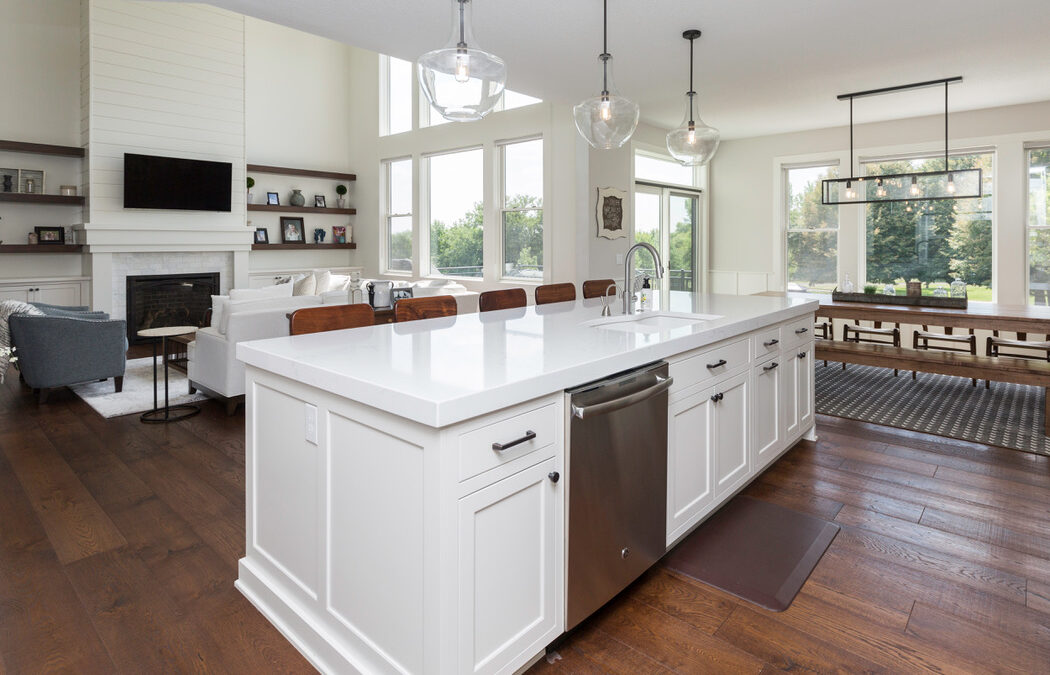Whether you’re installing new hardwood floors or refinishing existing floors, sanding is a crucial part of the process. While some hardwood floor projects can be done by yourself, relying on professionals is often the wisest choice. You can rent hardwood floor tools from local or national stores for self-sanding, but this doesn’t guarantee top-notch machines or hardwood floors that will stand the test of time.
Also, a professional sander will approximately only take 1/32 – 1/16 off of the wood wear layer (the amount of wood between the top of the board and the tongue/groove). It is very easy to sand through the wear layer as a nonprofessional.
At Barnum Floors, we have trusted craftsmen with over 25 years of experience! From start to finish, we supply the highest quality materials for every project. Learn about our dustless sanding process to perfect your hardwood floor design.
Why You Should Sand Your Hardwood Floors
Sanding your hardwood floors is important to prevent finishing problems later in your project. At the start, sanding is essential for repairing damaged wood and removing the original finish and stain to reveal new layers of your hardwood floor. Older hardwood floors can have scratches, dents, and other imperfections, so creating a new, smooth surface allows the natural wood to shine.
Skipping or doing a careless job with sanding results in an uneven coating. This leads to an overall uneven appearance and the inability to hide imperfections beneath coatings. A professional sander will use multiple grit levels of sandpaper before a final buffing with a high level of grit for smooth, flawless pores. It is critical these steps are not missed.
Why You Should Opt for Dustless Sanding
Dustless sanding has evolved over the years, making it a common practice and preference among homeowners. Dustless sanding is more efficient and healthier than allowing debris to circulate throughout your home.
Dustless sanding doesn’t completely avoid all dust, but it is believed to collect approximately 99 percent of dust. Dustless sanders increase productivity by minimizing cleanup time and ensuring a smooth finish for your dream hardwood floors.
Also, because most dust is captured and not released into the air, it helps maintain good indoor air quality. Dustless sanding is beneficial for individuals with asthma, respiratory sensitivities, and allergies, as well as sensitive populations, such as children, hospitals, and nursing homes.
How Dustless Sanding Works
Before beginning the sanding process, Barnum Flooring prepares your home to reduce the amount of dust exposed in your house. On top of the dustless sanders, we plastic off doorways, cabinetry, or areas near the project that are not being refinished. Barnum uses the plastic as another layer of protection to avoid any accidental dust from escaping.
Dustless sanders come in various types, but the most common variety employs vacuum attachments. Vacuum suction tubes can be attached to sanders to immediately capture dust, keep the dust from rising up into the air, and keep it close to the ground through suction power.
Once Barnum finishes the dustless sanding process with a final vacuum clean-up and dry-tack of the wood, we are ready to start on the next steps of completing your hardwood floor project. As a customer, there will be some light dusting once the project is complete, but really no more than you will experience with normal living in the home.
Professional Flooring By Barnum
Call Barnum Flooring today to start your hardwood floor project and select from our variety of hardwood finishes! The Barnum professionals follow the National Wood Flooring Association’s sanding guidelines for the best result and after the final coat, our team helps you put your home back together.


Recent Comments